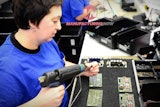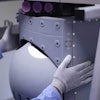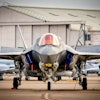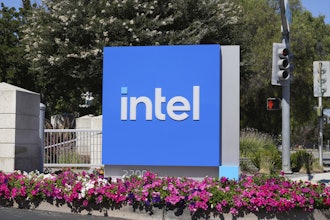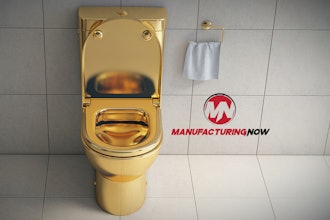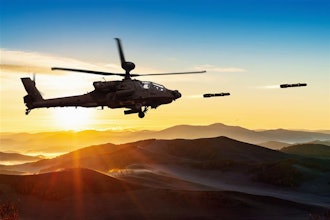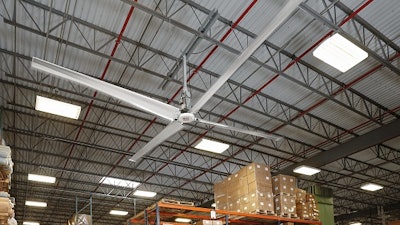
In any industrial facility, maintaining a comfortable environment is a key component for success. Research has consistently shown that workers who are uncomfortably hot or cold are more prone to fatigue, error and distraction and are less productive. They are also potentially at risk for heat stress and other medical issues and are more likely to suffer from low morale—things that no facility manager wants.
For years, traditional-high speed fans have been used to cool industrial buildings, with mixed results. While they do provide a helpful breeze, they have several drawbacks including a disruptive, loud noise, long cords that can get tangled and create potential hazards and high energy bills. Although this is not always the case with every warehouse, HVAC and building management systems (BMS) can address certain heating and cooling problems. Yet, facility managers should recognize another innovation readily available to them: networked systems of high-volume, low-speed (HVLS) fans.
By mixing heat-stratified layers of air, HVLS fans make HVAC systems more efficient, significantly improving the comfort and health of those facility visitors/employees 365 days a year. They also help reduce energy consumption, combat air quality issues and can even be integrated into fire prevention systems.
Keeping Cool with HVLS
Whether a facility calls its home in the Deep South or the upper Midwest, summer months can create a bevy of heat-related health concerns for patrons and employees within its walls. Heat stroke, heat exhaustion and other temperature-related medical issues can directly affect an organization’s bottom line, causing insurance and regulatory headaches – not to mention lowering employee productivity and morale.
While adding air conditioning is the best-case scenario, it isn’t always practical due to cost considerations and building configurations. With or without air-conditioning, though, most heat stress-prone buildings can benefit immensely from HVLS fans.
Although smaller, floor-mounted fans can be helpful in limited areas, their high wind speed can cause problems, while their noisy operating level introduces another stress-inducing factor. Not to mention the high amount of electricity they use. HVLS fans, on the other hand, use relatively little energy and provide a gentle, quiet breeze that is very comforting.
Various studies have estimated that a 2 to 3 mph air speed creates a cooling sensation of 7 to 11 degrees F. To put this in perspective, the effective temperature of an 84-degree F environment can be dropped to 73 degrees F by adding a fan moving air at 3 mph. Studies also show that air moving faster than 5 mph can be disruptive and provides little, if any, added cooling benefit.
Technically advanced HVLS fans can move large volumes of air over an area up to 22,000 square feet. A single HVLS fan can replace as many as 10 to 20 floor fans, reducing clutter on the ground and lowering the chances of an accident. By mixing air, HVLS fans also help air-conditioning systems work more efficiently, allowing them to be operated at a lower set point.
Saving Energy in Winter
While most people equate fan usage with warm summer weather, their benefits in winter may be even more pronounced. Although HVAC systems do an efficient job of providing heated or cooled air to specified areas of a building, they don’t optimize airflow – and, as every grade schooler knows, warm air rises. Thus, in tall warehouses there may be a 20 degree F difference between the floor-level workspace and the ceiling during the heating season as a result of warm, light air rising and cold, heavy air settling. As such, a heating system must work hard for extended periods to maintain the temperature near the floor, or at the thermostat set point, wasting precious energy and dollars. The chart below illustrates this concept.
HVLS ceiling fans mitigate the rising heat effect by gently moving the warm air near the ceiling back down toward the floor where it is needed. The air reaches the floor below the fan where it then moves horizontally a few feet above the floor. The air eventually rises to the ceiling where it is cycled downward again. This mixing effect, known as destratification, creates a much more uniform air temperature with perhaps a single degree difference from floor to ceiling. Facilities equipped with HVLS fans lower the burden on the heating system, reduce energy consumption, and save money.
Conventional high-speed ceiling fans do not have this effect. Although they have been used to help circulate air for many years, they are ineffective in moving the warm air from ceiling to floor. By quickly spreading airflow away from the fan, little of that air reaches people working at the ground level. Thus, in facilities with traditional ceiling fans, the full benefits of the HVAC system are rarely realized.
Integrating HVLS with BMS
Although a single HVLS fan can cover an area of up to 22,000 square feet, many large facilities employ multiple fans to enhance their environmental control. In facilities that have ambient sunlight or temperature-effecting operations (such as loading docks) in one part of the building, but not another, the fan speed, timing and other settings may need to vary by location – creating a maintenance challenge. Fortunately, the most advanced HVLS fans can be linked into networks of up to 18 fans and run off of a single controller. That controller allows for independent speed adjustments, scheduled start/stop times and the ability to start/stop based on preset temperature settings – a feature that can be very important in operations such as medicine, produce, cheese or wine storage.
An optional Ethernet port allows the system to be accessed via a remote device so they can be controlled via a smartphone or other mobile device. Additionally, they can be programmed into a BMS and connected to other infrastructure equipment such as exhaust fans. A “fire stop” option is also available, in which the BMS will automatically turn off the HVLS fans and activate sprinklers in the event of a fire.
Improving Comfort While Reducing Energy Use
HVLS fans are practical and affordable solutions to improve air movement, reduce heat stress and offer overall better environmental control. Working in conjunction with HVAC systems or on its own, HVLS fans help to control energy costs, boost productivity and increase employee comfort.
A comfortable, healthy workplace signals that a company’s management is willing to invest in employees and is serious about their safety – as well as the integrity of the products it manufactures handles. All can have a direct and significant impact on the organization’s bottom line.
The information herein is provided as a general reference regarding the use of the applicable product(s) in specific applications. This information is provided without warranty. It is your responsibility to ensure that you are using all mentioned products properly in your specific application and in accordance with all laws and regulations.
Andy Olson is the marketing director for Rite-Hite Fans. For more information, visit www.ritehite.com.
